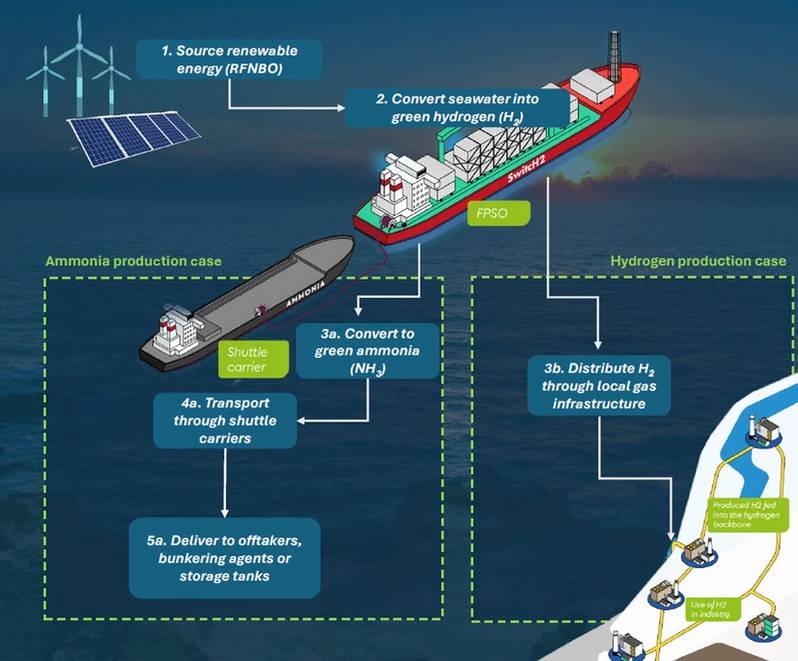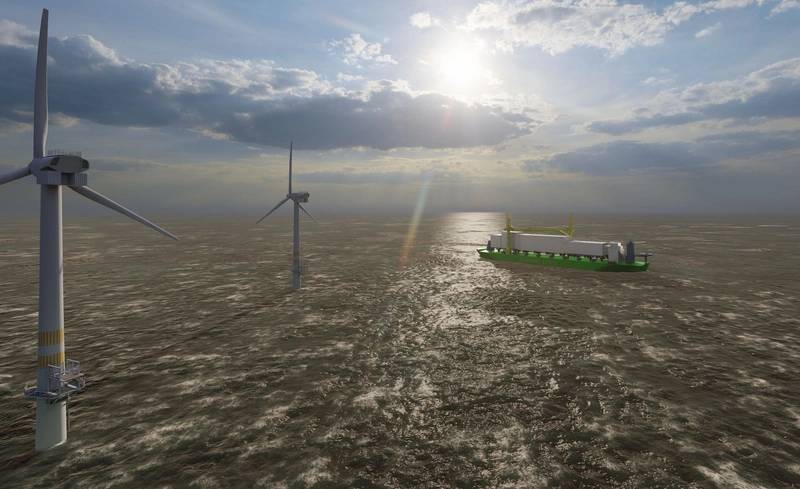
The intermittency of offshore wind power is both a challenge and an opportunity for green hydrogen production.
There will be a new generation of platforms taking up space in offshore wind farms as hydrogen production is used to help balance power supply and demand. Green hydrogen could be produced at off-grid windfarms but, if grid-connected, it can also be produced at peak times by running electrolyzers and then stored for later.
“Here, there’s an important role to play for green hydrogen which can operate at a different scale to batteries to balance out fluctuations in the supply of, and demand for, renewable energy production,” says Synne Myhre Jensen, Public Affairs Advisor at Norwegian hydrogen company Hystar. As part of the HyPilot project, collaborator Equinor is planning to demonstrate Hystar’s high-efficiency PEM electrolyzer for hydrogen production tailored to the variable output typically found in offshore wind applications.
 Green hydrogen could be produced at off-grid windfarms, but it can also be produced at peak times by running electrolyzers and then stored for later in cases where the windfarm is connected to the grid.
Green hydrogen could be produced at off-grid windfarms, but it can also be produced at peak times by running electrolyzers and then stored for later in cases where the windfarm is connected to the grid.
Image courtesy of SwitcH2
PEM electrolyzers can ramp up and down quickly to deal with the fluctuations in power, although frequent starting and stopping could lead to component degradation, but the Sealhyfe project has already demonstrated that the challenges can be overcome - at sea. Lhyfe conducted a 14-month trial of a 1MW PEM electrolyzer from Plug that confirmed the system’s ability to manage the variability of power experienced, including at maximum production capacity. The performance achieved was as high as on land. Lhyfe aims to have a 10MW system in operation from 2026.
In another project, SwitcH2 and BW Offshore, along with partners Strohm, MARIN and TU Delft, are developing an offshore green ammonia FPSO able to produce 790 tons of green ammonia per day at its peak using a 300MW electrolyzer plant.
The FPSO will use wind and wave energy, converted to DC onboard, to power PEM electrolyzers.
“The ship’s power generation and distribution system is able to produce the power needed to keep the electrolyzers running at all times, because we can add power from the ship’s power generation system in addition to the renewable energy,” says Bob Rietveldt, International Director at SwitH2. “This way we avoid any shutdown of the plant and are always able to generate the essential loads needed to keep operating, even in the days when there is no wind.”
He says it’s logical and more economical to have a centralized platform for the electrolyzers. “In the case of decentralized deployment on individual wind turbines, it would mean there are times it cannot produce at all if you cannot store the power, and it would be difficult to start-up again and most likely require hydrogen storage or battery power at the turbine to overcome the situation, thereby making it very costly. Centralized electrolyzers will always remain operational as we can supply additional power from the ship’s system when needed.”
 SwitH2 believes it’s logical and more economical to have a centralized platform for the electrolyzers.
SwitH2 believes it’s logical and more economical to have a centralized platform for the electrolyzers.
Image courtesy of Swith2
Solar in addition to offshore wind makes a lot of sense, he says. “Combining wind, wave and solar is more stable but still there can be days where back-up power is required. Energy storage in the form of produced liquid ammonia in our FPSO is the easiest and most economical way to do this, and it is easy to store inside the FPSO. Hydrogen storage or battery storage are more difficult and not the most optimal solution.”
Anion exchange membrane (AEM) electrolyzer technology, a development of PEM that uses non-critical raw materials, could also offer a scalable and economic solution, according to participants in the EU-funded HYScale initiative. The specific technology, developed by CENmat, can operate stably at higher current densities, says CEO Dr Schwan Hosseiny, and this means the plant can be more compact. “Low space requirements are important because the projected electrolysis installation to 4-5 terawatts by 2050 would require enormous space if electrolyzers operated at low current densities.”